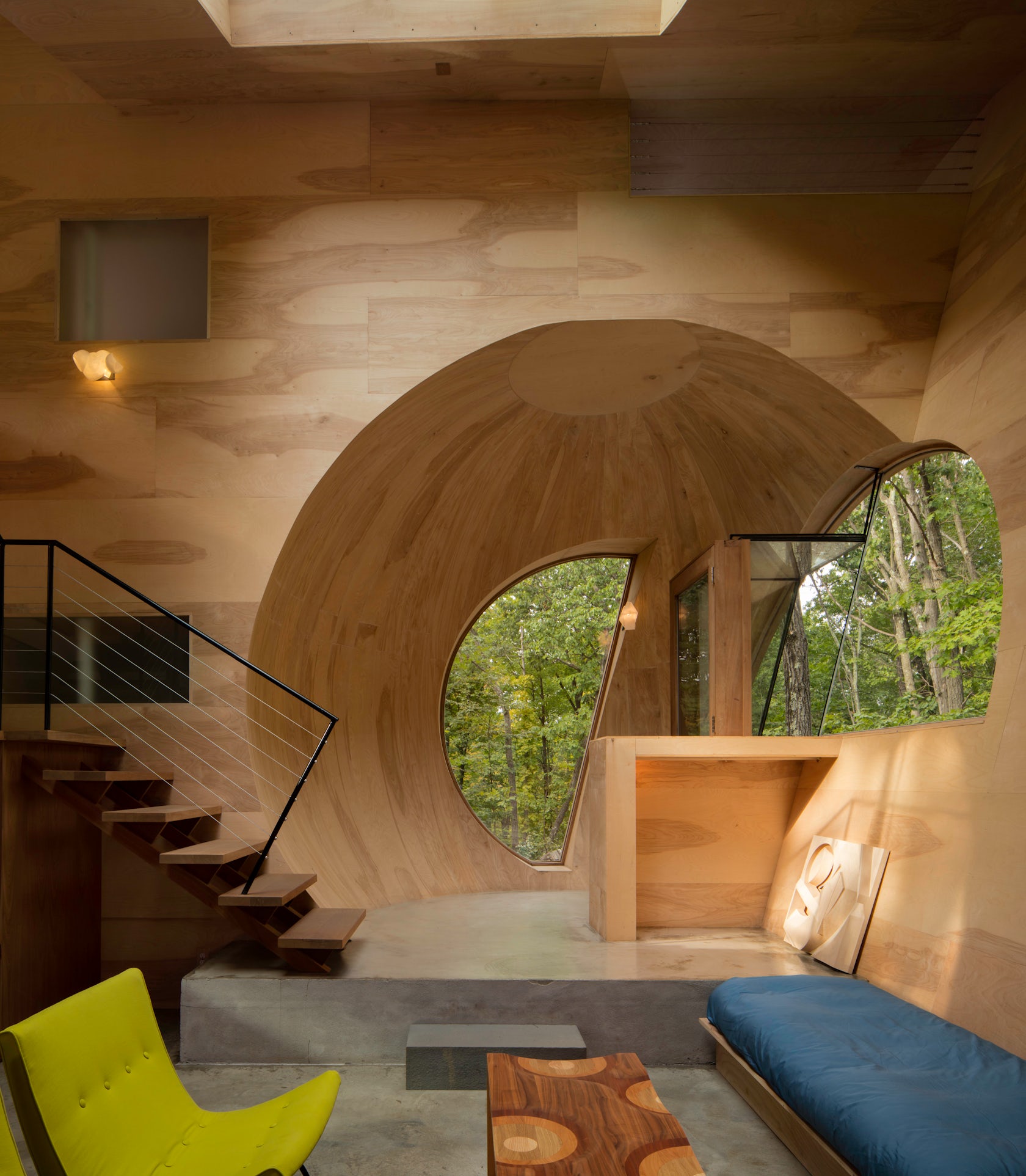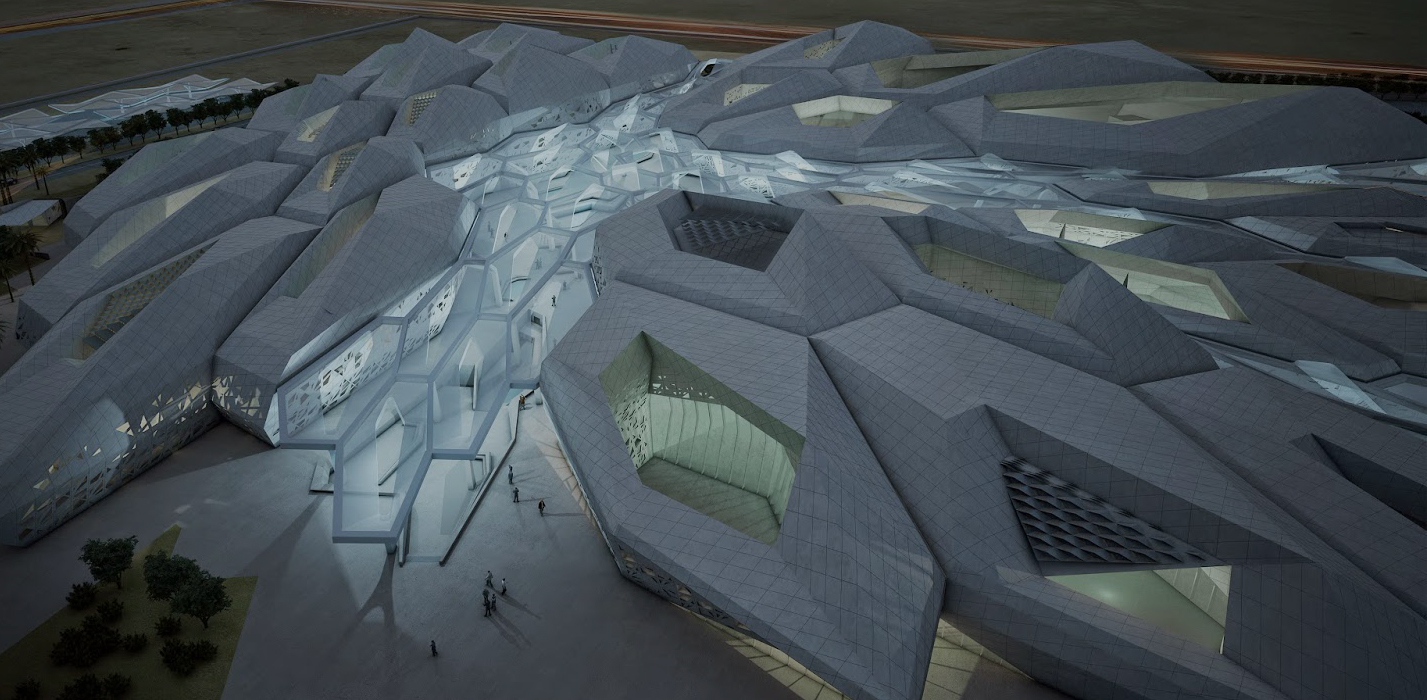Architectural experimentation in built work is an ambition desired by many architects, but so often these attempts are naturally mediated by the expectations of clients, necessitating a certain level of restraint in developing projects. For Steven Holl, the pursuit of unencumbered experimentation has been realized in a 918-square-foot home in Upstate New York, an achievement effectuated by his sole proprietorship of the property.
The Ex of In House, compact in scale and yet powerful in both composition and function, was born out of a two-year-long research project developed by Steven Holl Architects that aims to question “current clichés of architectural language and commercial practice,” says the office. Now, the expressive geometry of the Ex of In House has been captured in a dynamic film from architecture film producers Spirit of Space.

Holl inspects the construction progress on Ex of In House, Rhinebeck, New York© Steven Holl Architects

© Paul Warchol Photography
While intended to accommodate a guest house for the architect’s Hudson Valley home, the 28-acre plot of rocky land on which the house resides “has been established as an experimental topological landscape” for the firm’s explorations. Posited as a structure that “explores a language of space, aimed at inner spatial energy strongly bound to the ecology of the place,” the project is chiefly concerned with how an architectural work can not only formally respond to its surrounding environment, but how it can insert itself within the existing systematic ecological flows that power it.

© Paul Warchol Photography
For this reason, the house stands in revolt to the dominant practice of “modernist suburban houses that ‘sprawl in the landscape.’ Instead, the Ex of In is a house of compression and inner voids.” Harnessing the expansive energy within much residential architecture, Ex of In House sees the inversion, but not depletion, of space through a series of interventions that consider new interpretations of interior relations.

© Paul Warchol Photography
The house’s geometry is “formed from spherical spaces intersecting with tesseract trapezoids” and relishes in the unconventional pockets and connections made from the unusual interlocking of two regular volumes. Most striking is a spherical timber void that comprises the home’s entryway.

© Paul Warchol Photography
“The shift in section of the house alters internal space with vertical dynamic spatial overlap. Situated around one main volume, open to the second level, with the kitchen placed in the center, alternative use patterns are created. There are zero bedrooms, yet the house can sleep five,” state the architects. This volumetric dislocation extends to the landscape, as well, as circular and rectilinear windows bend and wrap around the shifting contours of the home, allowing the natural vegetation to disrupt the space in a variety of angles and dimensions.

© Paul Warchol Photography
In keeping with its ecological motivations, the house reaches out functionally to the landscape. “Instead of fossil fuel, the house is heated geothermally. Instead of grid power, the house has electricity from the sun,” explains the firm. The house is energy independent using a solar-powered energy storage system and utilizes 3D-printed biodegradable plastic lamps to lighten its footprint. Locally sourced glass, birch plywood and mahogany were crafted by two local builders, the entire wooden structure erected without the introduction of sheet rock.

© Paul Warchol Photography
While encompassing a confluence of intersecting and dislocating spatial techniques, the Ex of In House works to shift the often aggressive and disruptive act of building away from the environment and into the internal universe of the home. Orbiting around a self-sustaining axis all its own, the Ex of In House expresses itself boldly, yet tranquilly, a work of experimentation that ultimately finds restraint.

© Paul Warchol Photography
For more on Steven Holl’s design process, read our in-depth interview on the architect’s journey from poetic models to brilliant buildings.

 Ex of In House
Ex of In House 


